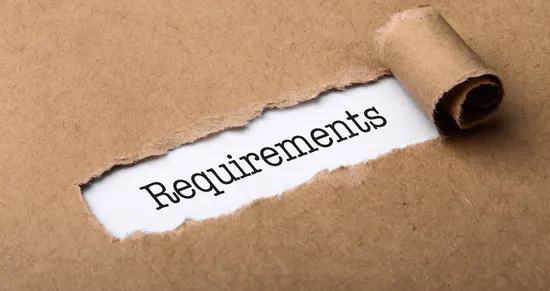The In Vitro Diagnostic Regulation (IVDR) has significantly changed how in vitro diagnostic medical devices are assessed in the European Union. Since its full application began in May 2022, the IVDR, Regulation (EU) 2017/746, has introduced stricter requirements, especially for higher-risk devices. Yet, many manufacturers are still struggling to catch up, particularly when it comes to preparing their IVDR technical documentation.
Delays in documentation can lead to market access barriers, recalls, or penalties. With limited Notified Body capacity and stricter conformity assessments, starting early is essential. At Maven, we help in vitro diagnostic device (IVD) manufacturers manage their regulatory compliance activity with clarity, ensuring their devices meet the latest safety and performance standards.
What Goes into an IVDR-Compliant Technical Documentation?
Preparing IVDR technical documentation isn’t a single-step task. It’s a comprehensive set of evidence that shows a device complies with the IVDR’s General Safety and Performance Requirements (GSPRs). According to the European Commission, all devices, regardless of risk class, must have this documentation readily available for assessment.
The IVDR technical file should follow a structured layout and be updated regularly to reflect any changes in design, performance, or risk assessment. This documentation is what Notified Bodies and authorities will rely on when determining if your device can be marketed in the EU.
Essential Elements to Include
To meet IVDR technical documentation requirements, manufacturers must include several core elements:
- Device Description and Specification: Clear labelling, intended use, and classification. It should be easily understandable and compliant with IVDR.
- Design and Manufacturing Information: Details on manufacturing processes and design verification.
- GSPRs Checklist: Demonstrating how each safety and performance requirement is met.
- Performance Evaluation: Includes scientific validity, analytical performance, and clinical performance data.
- Risk Management: A full lifecycle risk analysis based on ISO 14971. This should include hazard identification, risk estimation, risk control measures, benefit-risk analysis, and evaluation of residual risks, updated continuously through post-market data.
- Post-Market Surveillance Plan: A detailed plan outlining the methods and procedures for actively monitoring the device’s performance and safety once on the market. It should describe data collection, trend reporting, periodic safety updates, and mechanisms for taking corrective action when needed.
- UDI and Traceability Information: Include the UDI along with mechanisms that ensure full traceability through the supply chain. This enables accurate identification, facilitates market surveillance, and supports quick and effective recall processes when necessary.
Using an IVDR technical documentation template aligned with MDCG guidance and CE‑ IVDR 2017/746 can streamline your process and reduce errors.
Realistic Timelines and Implementation Challenges
Building a full IVDR technical file takes time. For Class C and D devices, it may take 6-12 months or more, depending on the complexity and existing documentation. Class A and B products also require detailed planning, especially if they haven’t previously needed Notified Body involvement.
One of the biggest challenges is Notified Body capacity. Only 12 Notified Bodies are designated under IVDR, handling thousands of applications. This backlog means delays are common, and manufacturers who don’t start early may miss out on market opportunities. Early engagement under CE‑IVDR 2017/746 mitigates this risk.
Why Class C and Class D Devices Need Immediate Action
Class C and D devices face the most rigorous scrutiny under IVDR. These include tests such as serological assays, genetic testing, companion diagnostics, and blood grouping tests, which have a direct and significant impact on patient safety.
For these devices:
- Performance evaluation requirements are much stricter.
- Independent assessments from Notified Bodies are mandatory.
- Batch testing and reference labs may be required for Class D.
- Compliance with Common Specifications (CS) is a critical requirement.
If you haven’t started building your IVDR technical documentation for these classes, now is the time. Notified Bodies often request extensive updates and clarifications, so buffer time is essential. Early engagement helps avoid missed renewal deadlines and product withdrawal from the market.
Strategic Planning for Class A and Class B Products
While Class A and B devices are lower risk, they still require complete and compliant documentation. Class A sterile devices and reusable surgical instruments require Notified Body involvement for certain elements, which many manufacturers are not prepared for.
Here’s how you can ensure a smooth and compliant IVDR documentation process:
- Connect with consultants like Maven who can help you prepare IVDR technical documentation customized to your product type.
- A roadmap that includes performance evaluation and risk analysis.
- Check if notified body involvement is necessary for your IVD device.
- Early data collection for post-market surveillance systems.
Planning ahead ensures you avoid bottlenecks during final submission. Maven offers support at every step, making sure your documentation is audit-ready from day one.
Avoiding Common Mistakes in IVDR Technical File Preparation
The IVDR preparation process can lead to avoidable mistakes, even for experienced medical device manufacturers. At Maven, we work closely with clients to identify and prevent these issues early. Here are some of the most common problems we help resolve:
1. Incomplete or Outdated GSPRs Checklist
The GSPRs checklist is a critical component of the IVDR technical documentation. Submitting an outdated or incomplete checklist can lead to non-compliance and significant delays in the conformity assessment process. Manufacturers must ensure that each applicable GSPR is addressed with supporting evidence and kept updated throughout the product lifecycle.
2. Lack of Traceability from Design Input to Final Product
One of the core expectations under IVDR is full traceability from the initial design input to the final In Vitro Diagnostic (IVD) product. Missing or poorly documented links between design specifications, risk controls, and verification activities can compromise the integrity of the technical file. Clear traceability demonstrates that the device meets its intended purpose safely and effectively.
3. Misclassified Risk Category
Misclassifying an IVD’s risk category can lead to selecting the wrong conformity assessment route, resulting in unnecessary delays or rejection by notified bodies. Accurate classification under the IVDR is essential, as it directly influences the depth of performance evaluation and the level of regulatory scrutiny.
4. Insufficient Performance Evaluation Data, Especially for Legacy Devices
The performance evaluation of in vitro diagnostic medical devices must include robust clinical evidence, scientific validity, and analytical performance. Many legacy devices, which were once approved under previous directives, now fall short of IVDR standards due to a lack of current or comprehensive data. A strong IVD performance evaluation strategy is essential to demonstrate continued compliance and justify market placement.
5. Neglecting Updates to the Technical File Post-Changes
Under IVDR, the technical documentation must be treated as a living file. Any change in the product, whether design modifications, software updates, or manufacturing changes, must be reflected promptly. Failing to update the file post-market can raise non-conformities during audits or inspections and jeopardise market access.
An IVDR submission isn’t a one-time event. It requires ongoing vigilance, regular reviews, and timely updates to remain compliant with evolving regulations and maintain access to the EU market. At Maven, we support you through this continuous process, ensuring your performance evaluation report of your medical device stays current and compliant, every step of the way.
Benefits of Starting Early: Compliance, Market Access, and Efficiency
Beginning the IVDR technical file process early offers multiple benefits beyond just regulatory compliance:
- Faster Market Access: Early completion ensures fewer delays with Notified Bodies.
- Reduced Costs: Avoid last-minute rushes, overtime costs, and expedited consultancy fees that are typically charged for urgent or priority support.
- Improved Product Quality: A well-structured file highlights potential risks and fixes early in the design phase.
- Stronger Audit Preparedness: With clear documentation, you’ll be ready for inspections or regulatory changes.
According to the European Association of Medical Devices Notified Bodies (Team NB), early preparation is one of the top factors in successful IVDR certification. Starting early under CE‑IVDR 2017/746 puts you in control rather than scrambling at the last minute.
At Maven, we understand the full spectrum of IVDR technical documentation requirements and guide manufacturers through efficient, customized solutions based on your device class and market goals.
Conclusion
The IVDR has raised the bar for in vitro diagnostic devices, and for good reason. It aims to protect patient safety, ensure data reliability, and improve transparency across the EU market. But compliance is no small task.
From Class A to Class D, building a complete and compliant IVDR technical documentation package requires strategic planning, time, and deep knowledge of regulatory expectations. Aligning every step with Regulation (EU) IVDR 2017/746 ensures you meet the latest standards and avoid costly oversights.
From initial steps to revisions of existing documents, Maven provides expert support customised to your requirements.
Don’t wait, start your IVDR journey now and move forward with confidence.
References
1. When do these changes go into effect?
2. EU IVDR: Ensure compliance with technical documentation, notified body processes and transition periods






